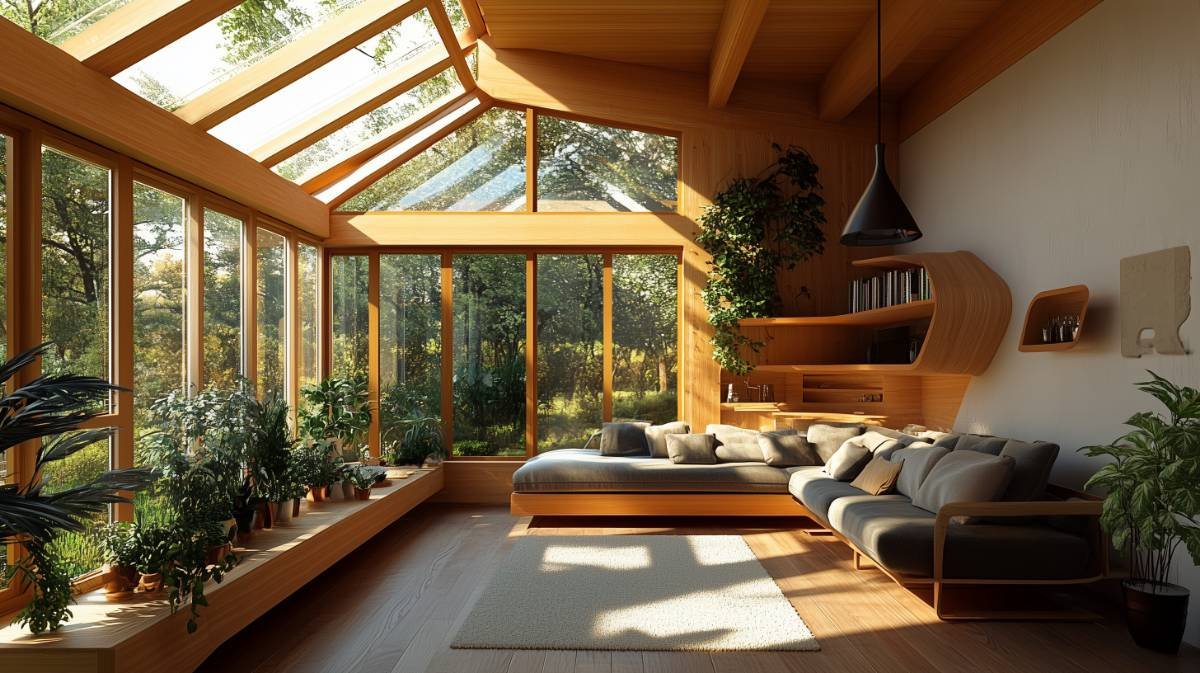Understanding Energy Efficiency
Saving energy is like finding a hidden treasure—it cuts down bills and gives our planet a break. Let’s dig into what makes up this concept and the real perks of cutting back on energy use.
Definition of Energy Efficiency
Energy efficiency is all about doing the same job but with less juice. It’s about squeezing more from every watt, kinda like getting two for the price of one. Think of those nifty light bulbs with the ENERGY STAR label—they sip just a bit of power compared to the older models yet shine just as bright. A little like trading your old car for a new one that guzzles less gas but still gets you from A to B without a hitch.
Benefits of Energy Conservation
Chopping down on energy waste isn’t just some fancy trend. It’s a game-changer for your wallet, the air you breathe, and the way your house feels. Here’s the lowdown:
| Benefit | What It Means For You |
|---|---|
| Cost Savings | Spend less on your bills ’cause those energy-efficient gadgets don’t eat up as much energy. |
| Environmental Protection | Cut down on nasty emissions with energy-saving gear and go for green power options like solar. |
| Enhanced Comfort | Feel nicer indoors with better heating, cooling, and insulation upgrades. |
| Energy Security | Move away from using up all the oil and gas, making energy more stable and safe for everyone. |
The folks at ENERGY STAR are here to lend a hand. Their seal means products and spaces are tested to use less, emit less, and leave a smaller footprint.
Leaders have dreamed up guides to nudge people toward saving energy. For example, in a lot of places, they dangle offers like grants for eco-friendly gear or price breaks to get folks saving. Curious for more? Check around our bit on government policies and energy conservation.
By getting savvy with energy-saving tricks, you can bank some cash and help keep Earth a bit better off. It’s a win-win switch for your pocket and the planet.
Energy Conservation Strategies for Buildings
Saving energy in buildings ain’t rocket science, but it sure saves some dimes. Let’s chat about three good tricks: better insulation, fixing up those tired HVAC systems, and getting some slick LED lights in the mix.
Building Envelope Insulation
Keeping the heat in (or out, depending on where you’re at!) is all about having solid insulation. When your walls, ceilings, and floors are well-padded, your heating and cooling systems don’t have to work overtime. So, what’s the bonus here? You slash those hefty energy bills, and your space feels cozy year-round.
| Insulation Type | R-Value per Inch | Average Cost per Sq.Ft. |
|---|---|---|
| Fiberglass | 3.1 – 3.4 | $0.64 – $1.19 |
| Cellulose | 3.2 – 3.8 | $0.60 – $1.80 |
| Spray Foam | 6.0 – 7.0 | $1.00 – $3.00 |
Higher R-values mean less heat sneaking out or in (Chad Fisher Construction). Thinking about making energy-efficient home upgrades? Throw some cash at quality insulation, and you’ll thank yourself later.
HVAC System Optimization
Heating and cooling could be why the energy meter spins so fast. Here’s how to tame them:
- Keep it Tip-top: Regular check-ups keep the system from guzzling power.
- Upgrade the Oldies: Swap ancient clunkers for slick new tech.
- Smart Thermostats: Say goodbye to fiddling with the dials—these do it all.
- Fit is Everything: Make sure your HVAC ain’t too chunky for the space.
Put in modern HVAC gear and those nifty thermostats, and see those bills shrink. Plus, clean filters mean happy machines.
LED Lighting Implementation
Switching to LEDs can be a game changer—small change, big difference. LEDs are the MVPs of lighting, outlasting and outperforming the old-school bulbs.
| Lighting Type | Lifespan (Hours) | Energy Use (Watts) |
|---|---|---|
| Incandescent | 1,000 | 60 |
| CFL | 8,000 | 14 |
| LED | 25,000 | 10 |
LEDs save around 85% of the energy compared to those hot, power-hogging incandescents. And they keep things cooler, cutting back on air-con use. If you want to take it further, think about daylighting—free lighting, courtesy of the sun.
Need more tips on saving energy at home or other energy-saving tricks? Look no further. Use these moves to seriously cut down on energy use and make your building a model of efficiency.
Industrial Energy Efficiency
Saving energy in factories isn’t just about hugging trees—it’s about cutting those fat electric bills, too. Let’s peek into ways to make machines sip power instead of guzzling it, give elevators a caffeine boost, and chill out with better cooling systems.
Equipment Efficiency Measures
Updating old equipment with top-of-the-line gadgets pays off. You know those office gizmos? They gobble up about a tenth of all electricity in commercial spots, and that number’s climbing (ACEEE). Swing for ENERGY STAR® tagged gear, and watch the savings sprinkle down.
Here’s a cheat sheet for your convenience:
| Equipment Type | Average Energy Use Reduction |
|---|---|
| ENERGY STAR® Computers | 25% – 60% |
| ENERGY STAR® Printers | 10% – 25% |
Toss in some energy-saving tech and home upgrade ideas from humble homes into the factory setting—you’ll see real changes.
Elevating Elevator Energy Efficiency
Elevators—those metal boxes in office towers—quietly munch away at about 5% of a building’s power. But good news! With some smart-upgrades, you can slash their munching by 30-40%.
Here’s what you can do:
- Install regenerative drives, which use energy usually wasted during braking.
- Light up the cars with efficient bulbs.
- Get standby modes in gear for when they sit idle.
Jump on these energy-saving tricks and watch your building’s power meter spin a whole lot slower.
Refrigeration System Upgrades
Cooling systems are notorious power pigs, hogging about 15% of commercial electricity use (ACEEE). But, smarter refrigeration can chill that number down.
Consider these upgrades:
- High-efficiency compressors pump cool with less juice.
- Variable-speed drives: tailor cooling to exactly what’s needed, no waste.
- Insulation upgrades: less heat sneaks in, more energy saved.
Going for these tweaks means you’ll both cut energy use and fatten your wallet.
Pouring some investment into these energy-saving initiatives isn’t just savvy—it’s the ticket to running a more eco-friendly and economically sound operation.
Energy Efficiency in Manufacturing Facilities
Manufacturing factories can cut down energy use big time and run smoother with some clever tricks. We’re talking about a smart game plan like energy audits, tuning up the HVAC systems, and swapping old lights for LEDs.
Energy Audit Importance
Start with an energy audit. It’s like a health check-up for your facility, showing where energy is getting gobbled up and where savings could be hiding (BE-CIS).
Why bother with an energy audit?
- Find out which machines and processes are guzzling the most energy.
- Spot energy leaks and come up with a fix plan.
- Set a starting point to track energy-saving progress later.
Check out the savings audits can uncover:
| Facility Type | Potential Energy Savings (%) |
|---|---|
| Small Manufacturing | 10 – 15 |
| Medium Manufacturing | 15 – 20 |
| Large Manufacturing | 20 – 30 |
HVAC System Optimization
Your HVAC system probably eats up a good chunk of energy in your plant. Getting it humming efficiently is key to slashing energy bills and running costs.
Ways to optimize your HVAC:
- Keep up with maintenance and fix things before they break.
- Invest in energy-efficient HVAC systems.
- Use programmable thermostats to keep temps comfy without overdoing it.
- Look into variable speed drives to match motor speeds to what’s needed.
These tweaks can chop down energy use and boost air quality, which means better work output and happier folks on the job.
LED Lighting Implementation
Switching to LED lights in your factory? It’s like getting a turbo energy booster. LED lights blow others out of the water with their efficiency, long-lasting nature, and all-around performance (BE-CIS).
Perks of LED lighting:
- They sip way less power compared to old-school bulbs.
- Their long life means you change them less often, saving on maintenance.
- Better light means better visibility and safety on the factory floor.
Let’s see how LED stacks up against old lighting tech:
| Lighting Type | Energy Consumption (kWh/year) | Lifespan (hours) |
|---|---|---|
| Incandescent | 876 | 1,000 |
| Fluorescent | 219 | 10,000 |
| LED | 82 | 50,000 |
By jumping on these energy-saving ideas, manufacturers can trim costs and aim for sustainability. Adding more efficient gadgets and checking out tips to save even more at home (energy-saving devices, energy-saving measures, ways to save energy at home) can give your energy efficiency push an extra nudge in the right direction.
Government Policies and Energy Conservation
Governments have a big influence on energy conservation. Their policies can change how everyone thinks about saving energy, both nearby and far away.
Role of Governments in Energy Efficiency
Governments drive energy-saving efforts. They set rules and offer perks to make saving energy viable and appealing.
Here are key roles:
- Education and Awareness: Governments run campaigns to teach people about saving energy (FAO). They help homeowners and builders make smart choices about energy-efficient home upgrades.
- Financial Incentives: Offering funding for energy-saving gear and improvements helps with the costs of new energy-saving technology.
- Regulation and Standards: By enforcing strict energy efficiency standards, governments push for new ideas in fields like renewable energy and smart tech.
- Pricing Policies: Setting prices to favor energy conservation can change how people use energy (FAO).
International Energy Conservation Efforts
Working together globally is key for saving energy everywhere. Countries often sign agreements to work towards shared goals.
Notable international efforts:
Paris Agreement: This major deal affects national policies by setting emission reduction targets and encouraging energy saving. Countries must submit their plans, known as NDCs, to cut emissions (Sustainability Directory).
Renewable Energy Integration: Places like Denmark and Germany are leading the way. They’ve smoothly added wind and solar power to their energy mix, ensured buildings use less energy, and supported eco-friendly public transport. This cut down carbon emissions and upped their use of renewable energy.
| Country | Renewable Energy Share (%) | Major Policies |
|---|---|---|
| Denmark | 49 | Wind and Solar Integration, Building Efficiency |
| Germany | 40 | Renewable Energy Sources Act (EEG), Sustainable Transport |
| United States | 12 | Energy Independence and Security Act, State-Level Renewables Portfolio Standards (RPS) |
Governments worldwide are getting on board with energy conservation. With rules, perks, and standards, they push for a future where energy use is smart and sustainable. For more tips on practical energy-saving steps and ways to cut down energy at home, check out our related articles.
Practical Energy Conservation Techniques
You don’t need to be Superman to have an energy-efficient place—just a few clever tweaks can improve the efficiency of your space, whether at home or at work. Let’s break it down into bite-sized nuggets: using daylight and LEDs, getting savvy with insulation, and jumping on the solar panel bandwagon.
Daylighting and LED Lighting
Why stick to artificial lights when you can bask in sunshine? Daylighting is all about using natural light instead of flipping the switch. Strategically placed windows and skylights let you soak up the sun inside your space. In return, you’ll cut back on electricity usage and turn your indoor area from gloomy cave to refreshing oasis, naturally boosting your mood.
On the days when sunlight isn’t enough (looking at you, winter months), LEDs are like the sidekicks you need. They’re energy superheroes compared to those energy-sucking incandescent bulbs, lasting way longer while sipping much less juice.
Why Go for Daylighting and LEDs?
- Smaller energy bills
- Feel-good, green vibes with less carbon emissions
- Adds a cozy feeling to your space
For more bright ideas on saving energy at home, check out our article on ways to save energy at home.
| Lighting Type | Energy Use (Watts) | Lifespan (Hours) |
|---|---|---|
| Incandescent | 60 | 1,200 |
| Fluorescent | 13-15 | 10,000 |
| LED | 6-8 | 50,000 |
Insulation Methods for Efficiency
Imagine your home wearing a big, fluffy coat. That’s what proper insulation does for any building. It keeps your place comfy, reduces the workload on your heaters and air conditioners, and helps cut down energy use. One powerful technique is Insulated Concrete Form (ICF) construction, where insulated blocks keep things cozy while standing strong against bad weather and fire.
Other insulation tricks include:
- Spray foam for a tight seal
- Fiberglass batts for budget-friendly warmth
- Reflective insulation bouncing away heat
These methods help prevent drafts and maintain a stable temperature, making your space snug and energy-smart.
Curious for more tips? Swing by our energy-saving measures section.
Insulation Goodies
- Cozy, stable indoor climate
- Saves both energy and money
- Lowers those pesky utility bills
Solar Panel Integration
Harnessing the sun with solar panels is like having your own power plant on the roof. They turn sunlight into electricity, powering everything from your microwave to heating water. Position them right, and you’ll be generating lots of power for your buck.
Going solar isn’t just kind to the planet. In the long run, those reduced energy bills and various government perks make the upfront cost easier to swallow—even if it stings a bit at first.
The Solar Panel Magic
- Clean, renewable energy source on tap
- Slashes energy bills
- Fewer carbon emissions in the world
Want to learn more about riding the renewable energy wave? Head over to our energy-saving technology section.
Adopting these practical strategies—daylighting with LEDs, better insulation, and solar panels—puts you on the road to big energy savings. Plus, you’ll be doing your bit for a greener tomorrow. Give these methods a go for an efficient and eco-friendly space.






